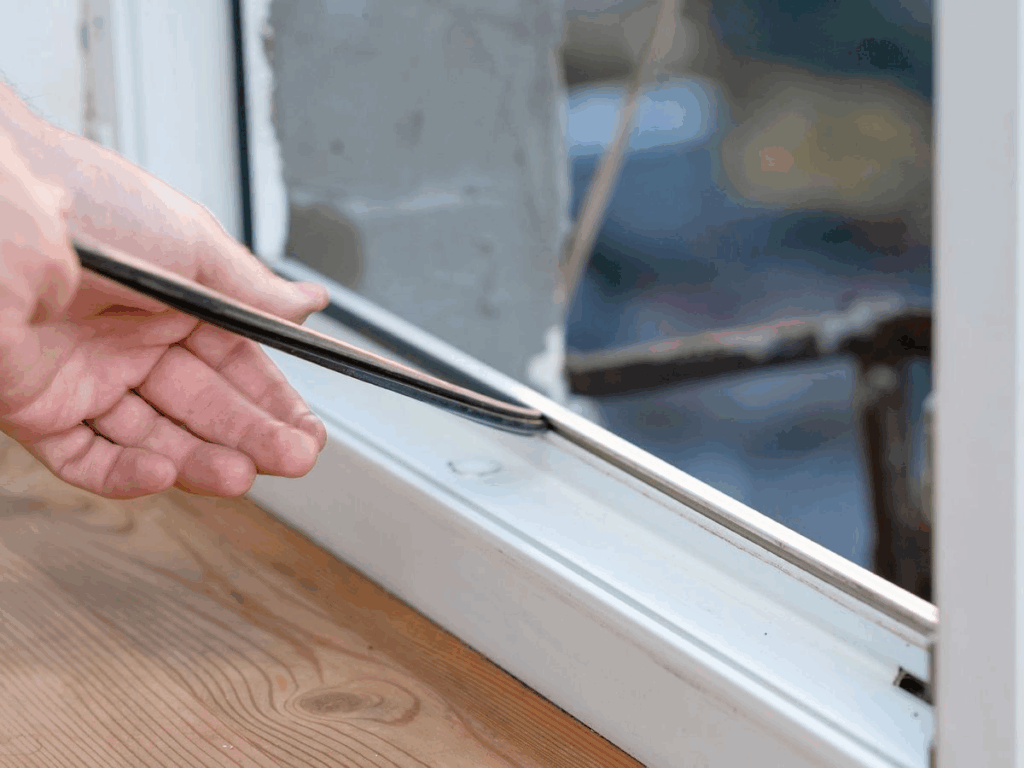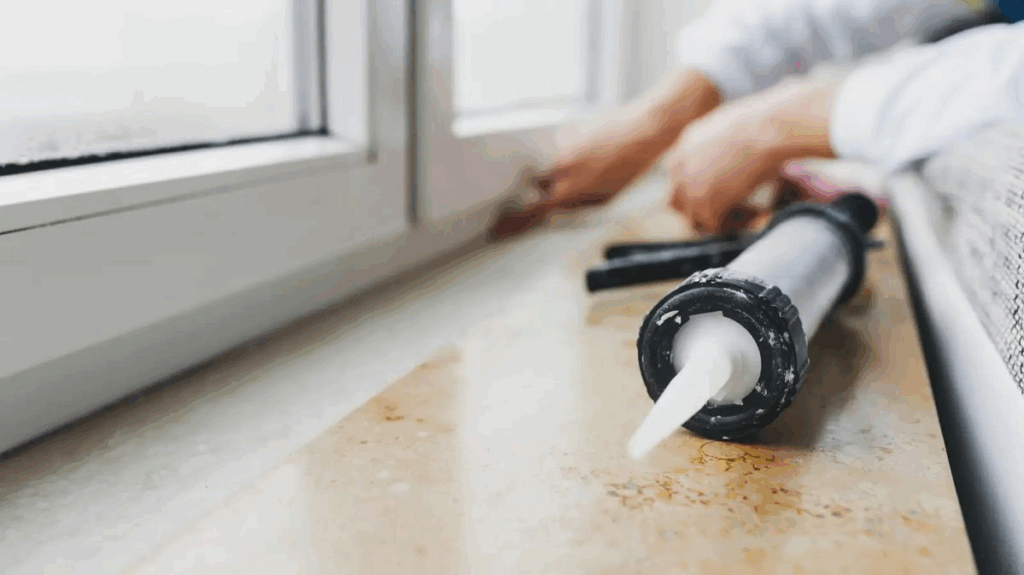As Canadian homeowners prepare for another winter season, attention often turns to energy efficiency and home comfort. Heating systems work hardest when outdoor temperatures drop, but much of that energy can be wasted if warm air escapes through drafty windows. Sealing gaps around window frames is one of the simplest and most effective steps you can take to reduce energy loss, cut heating costs, and make your living spaces more comfortable throughout the winter.
Why Window Sealing Matters
Drafts are more than a minor inconvenience. According to Natural Resources Canada, uncontrolled air leakage can account for up to 25% of a home’s heat loss. This forces heating systems to work harder, increasing energy bills and accelerating wear on equipment. Beyond financial concerns, drafts can make rooms feel uncomfortably cold and contribute to condensation that encourages mold growth.
By sealing window gaps before winter 2025 sets in, homeowners can:
- Improve comfort by eliminating cold drafts and creating a more even indoor temperature.
- Reduce energy costs by limiting heat loss and improving overall system efficiency.
- Protect against moisture damage by preventing condensation on cold window surfaces.
- Support sustainability by lowering household energy demand and carbon emissions.
Common Methods for Sealing Window Gaps
There are several reliable options for sealing gaps around windows. Each works best under specific conditions:
- Weatherstripping: Adhesive-backed foam, rubber, or vinyl strips applied to moving parts of a window to create a tight seal when closed.
- Caulking: A flexible sealant used to close stationary gaps where the window frame meets the wall or trim.
- Window Insulation Film: A transparent plastic film applied to the interior of the frame that creates an insulating air barrier over the glass.

These methods are inexpensive, widely available, and straightforward enough for most homeowners to install with basic tools.
Comparing Window Sealing Options
Choosing the right approach depends on the type of gap, the condition of the window, and how long you want the repair to last.
| Parameter | Weatherstripping | Interior Caulking | Window Insulation Film |
| Best For | Moving window parts | Stationary gaps < ¼ inch | Entire window glass surface |
| Cost | Low | Low | Low |
| Durability | 1-5 years | 5+ years | 1 season |
| Ease of Use | Easy | Moderate | Easy |
For maximum effectiveness, many homeowners use a combination of these methods – caulking for frame gaps, weatherstripping for movable parts, and film for older, single-pane windows.
Choosing the Right Sealing Approach
Before selecting a material, identify where the drafts are coming from. On a windy day, hold a lit incense stick or a small piece of tissue near window edges. If the smoke or paper moves, air is leaking in.
Once you know the source:
- Between sashes or frames that move: Use weatherstripping.
- At the joint between frame and wall: Apply a quality interior caulk.
- Across cold glass surfaces in older windows: Install window insulation film for seasonal relief.
When possible, choose products with low emissions or eco-friendly certifications to protect indoor air quality.
Mistakes to Avoid
Even simple projects can fail if best practices are overlooked. Avoid these common errors:
- Using the wrong caulk: Exterior-grade caulks may emit strong fumes indoors. Always use products labeled safe for interior use.
Blocking drainage points: Modern windows often include weep holes that allow water to escape. Sealing these can lead to moisture buildup. - Skipping preparation: Dust, moisture, or grease on surfaces will prevent adhesives and caulks from bonding properly.
- Overlooking larger issues: If windows are rotted, warped, or failing, sealing drafts is only a temporary fix. A professional inspection may reveal whether replacement is necessary.

For guidance on spotting hidden issues, see our article on routine maintenance inspections
Balancing Temporary Fixes and Long-Term Solutions
While seasonal solutions like insulation film are affordable and effective, they require yearly application. Caulking and weatherstripping provide a longer-lasting seal but may still need to be refreshed over time.
For older homes with single-pane or poorly sealed windows, upgrading to modern, energy-efficient units may be the most cost-effective choice in the long run. ENERGY STAR®-rated windows significantly reduce heat loss, improve comfort, and add to property value. Homeowners should weigh the modest, recurring cost of seasonal sealing against the one-time investment of window replacement when planning for the future.
Frequently Asked Questions (FAQ)
1. How can I tell if sealing window gaps will actually make a difference in my home?
If you’ve noticed cold spots near windows, rising heating bills, or condensation forming on glass, sealing gaps can deliver immediate improvements. Even small leaks let out a surprising amount of heat – up to 25% of home heat loss, according to Natural Resources Canada. A quick “draft test” with incense or tissue paper on a windy day can confirm where warm air is escaping.
2. What’s the most cost-effective way to stop drafts before winter 2025?
For most homeowners, a mix of weatherstripping and interior caulking provides the best results on a budget. These materials are inexpensive, widely available, and simple to apply. If you have older, single-pane windows, adding seasonal insulation film can boost comfort further by creating an additional air barrier.
3. Are there any risks or mistakes I should avoid when sealing my windows?
Yes – sealing done wrong can cause problems. Common mistakes include blocking built-in drainage holes, which can trap moisture, or using exterior-grade caulk indoors, which may emit strong fumes. Skipping surface prep is another frequent issue; dust and grease can prevent adhesives from sticking properly.
4. When should I consider replacing my windows instead of sealing them?
Sealing is a smart short-term solution, but it won’t solve deeper issues like warped frames, rotted wood, or failing seals in double-pane units. Studies show that air leakage can increase heating and cooling costs by 30% or more in Canadian homes. If your windows are decades old, drafty no matter how often you seal them, or consistently show condensation and moisture damage, it may be time to consider upgrading to ENERGY STAR®-rated replacements for long-term comfort and savings.
Conclusion
Sealing window gaps before winter 2025 is a practical, low-cost step every homeowner can take to prepare for colder weather. By combining weatherstripping, caulking, and insulation film where appropriate, you can reduce drafts, lower heating bills, and create a healthier, more comfortable home. For older properties, consider whether an investment in modern windows could provide even greater long-term benefits.

For more information on reducing heat loss and improving energy efficiency, visit Canada.ca.

